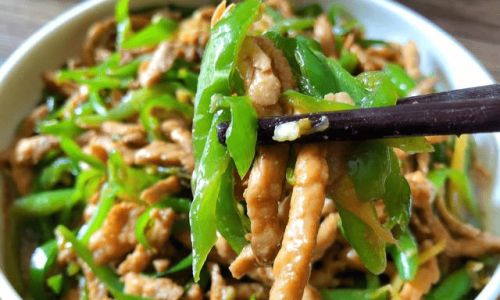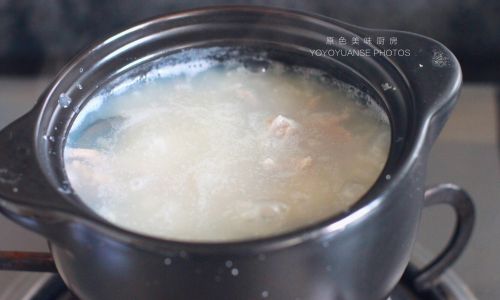Cooking tender and delicious stir-fried pork is an art that many home cooks strive to perfect. Whether you’re preparing a quick weeknight dinner or entertaining guests, mastering the technique for stir-frying lean pork can elevate your dishes to a whole new level. The beauty of stir-frying lies in its simplicity and speed, allowing you to create flavorful meals with minimal effort. In this guide, we’ll explore how to cook tender and delicious stir-fried pork in a way that’s both easy and satisfying.
Understanding Lean Pork
Before diving into the cooking process, it’s essential to understand the different types of pork cuts suitable for stir-frying. Lean pork cuts, such as pork tenderloin, pork loin, or thinly sliced pork shoulder, are ideal because they cook quickly and retain moisture, resulting in tender, juicy bites. Fatty cuts, on the other hand, can become greasy and overwhelming when stir-fried.
Preparation is Key
-
Slicing Technique: Proper slicing is crucial for tender stir-fried pork. Always slice the meat against the grain, which means cutting perpendicular to the muscle fibers. This technique shortens the fibers, making the meat more tender and easier to chew. Aim for thin, even slices to ensure uniform cooking.
-
Marinating: Marinating the pork slices can add layers of flavor and help retain moisture during cooking. A simple marinade of soy sauce, rice vinegar, a touch of sugar or honey, garlic, and ginger can work wonders. Marinate for at least 30 minutes, but overnight marination will yield even better results.
-
Tenderizing: If you have the time, you can tenderize the pork further by pounding it lightly with a meat mallet or the bottom of a heavy pan. This breaks down the fibers even more, ensuring a softer texture.

The Stir-Fry Essentials
-
High Heat: Stir-frying requires high heat to sear the meat quickly, locking in juices and creating a caramelized exterior. Make sure your wok or large skillet is preheated over high heat before adding oil.
-
Oil Selection: Choose an oil with a high smoking point, such as peanut oil, vegetable oil, or grapeseed oil. These oils can withstand the high temperatures needed for stir-frying without smoking or burning, which can taint the flavor of your dish.
-
Aromatics: The foundation of any good stir-fry is its aromatics. Garlic, ginger, and shallots or onions are staples. They should be added to the hot oil first and stir-fried until fragrant, creating a flavorful base for the dish.
Stir-Frying Step-by-Step
-
Preheat the Pan: Place your wok or large skillet over high heat and let it preheat for about 2-3 minutes. Add 1-2 tablespoons of oil and swirl it around to coat the bottom and sides evenly.
-
Sear the Pork: Once the oil is hot (but not smoking), add your marinated pork slices in a single layer, avoiding overcrowding. If necessary, cook in batches to ensure even searing. Stir-fry for about 2-3 minutes on each side, or until the pork is golden brown and cooked through. Remove the pork from the pan and set it aside on a plate.
-
Cook Aromatics and Vegetables: In the same pan, add a bit more oil if needed, and stir-fry your aromatics (garlic, ginger, shallots/onions) until fragrant, about 30 seconds to 1 minute. Then, add your choice of vegetables, such as bell peppers, snap peas, broccoli florets, or carrots, which should be cut into bite-sized pieces. Stir-fry the vegetables for about 3-5 minutes, until they are tender-crisp.
-
Combine and Sauce: Return the cooked pork to the pan with the vegetables. If using a sauce, pour it over the meat and vegetables, stirring quickly to coat everything evenly. Common stir-fry sauces include a mixture of soy sauce, oyster sauce, sesame oil, cornstarch slurry (for thickening), and a splash of water or broth. Cook for an additional 1-2 minutes, allowing the sauce to thicken and everything to heat through.
-
Final Touches: Taste and adjust the seasoning with additional soy sauce, salt, or pepper if needed. A sprinkle of fresh herbs like cilantro or scallions can add a fresh, bright finish.

Tips for Perfect Stir-Fried Pork
-
Don’t Overcrowd the Pan: Overcrowding will lower the temperature of the pan, causing the meat to steam rather than sear. This results in soggy pork and less flavorful vegetables.
-
Use a Wok if Possible: A wok’s shape and material are ideal for stir-frying, as they retain heat well and allow for easy tossing and stirring of ingredients.
-
Stir Constantly: To prevent burning and ensure even cooking, stir the ingredients frequently.
-
Rest the Meat: After removing the pork from the heat, let it rest for a few minutes before serving. This allows the juices to redistribute, making the meat even more tender.
Serving Suggestions
Stir-fried pork pairs beautifully with a variety of sides. Serve it over a bed of steaming jasmine or brown rice, or with noodles like lo mein or udon. For a more substantial meal, add a side of steamed vegetables or a simple green salad.
Conclusion
Cooking tender and delicious stir-fried pork doesn’t have to be complicated. By following these simple steps and tips, you can transform lean pork into a flavorful, satisfying dish that’s perfect for any occasion. With practice, you’ll develop your own stir-frying style, incorporating your favorite ingredients and flavors to create unique and memorable meals. So, the next time you’re in the kitchen, give stir-fried pork a try—your taste buds will thank you!





0 comments